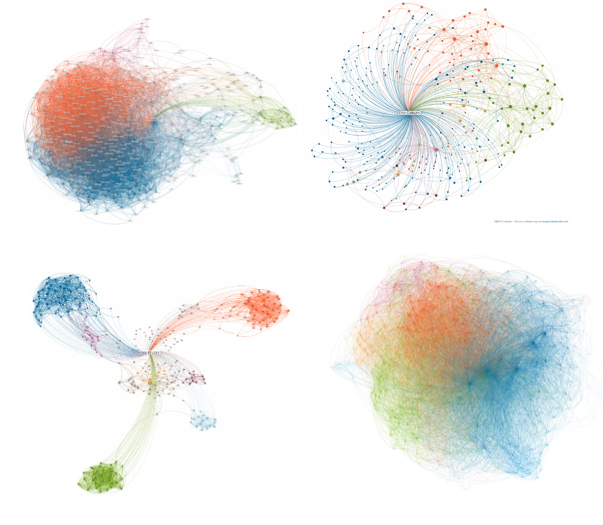This blog by Lisa Colton was originally posted on Darim’s blog JewPoint0.org
Networks and network weavers are quickly becoming the hottest terms in Jewish life (and elsewhere). Deborah Fishman’s been doing a series of interviews with ‘network weavers’ on eJewishPhilanthropy, The AVI CHAI Foundation, The Schusterman Foundation, The Jim Joseph Foundation and others have been making big investments in not only developing their own network strategies, but also in help their grantees and fields of interest start to work in more networked ways.
In January, I gave one of the first ELI Talks at the North American Jewish Day School Conference (NAJDS). As I sought a “network” image for my presentation, I noticed how different the shapes of these maps can be. In a fascinating discussion with Deborah Fishman we explored different types of skills and personalities in network weaving – those who have deep connections with a modest network. Those who have tentacles that reach far and wide. Those who are nodes, connecting people to one another.
I’m going to hypothesize – I don’t have data on this, and I’d be interested to know if it exists – that different styles of network weavers (personality, skills, training, preferred tools, strategic objectives) will produce different patterns of network maps.
For example, compare the structure of the following:

I hypothesize that we could codify these types in some way akin to a Myers Briggs Type Indicator evaluation to better clarify network weaver types. Further, I think that organizations, if they are able to clarify what they want from a network weaver, would have a preferred “type” of network weaver.
In our challenge to develop excellent network weavers, and encourage more organizations to effectively use them, could this sort of “type indicator” help organizations clarify what they are looking for, and help match-make employers and employees more effectively?
I wonder to what degree these types are influenced by personality, training and/or experience? Can you train or assign someone to be a type of network weaver, or are they predisposed to certain styles because of their personality?
I welcome input, research, challenges here – I’d love your help in refining these ideas.




Leave a Comment